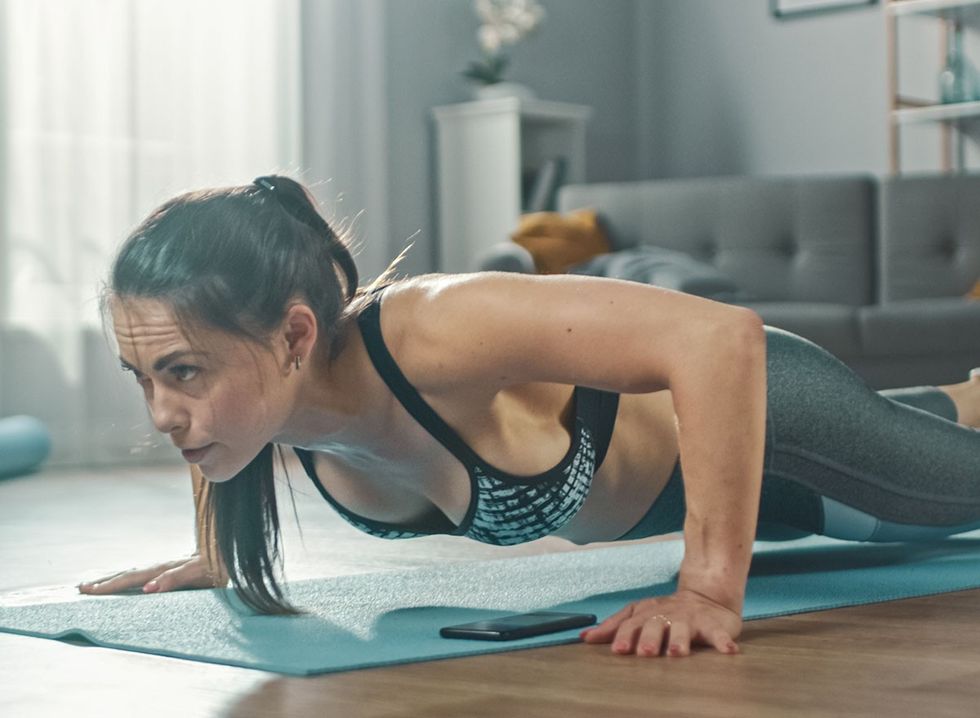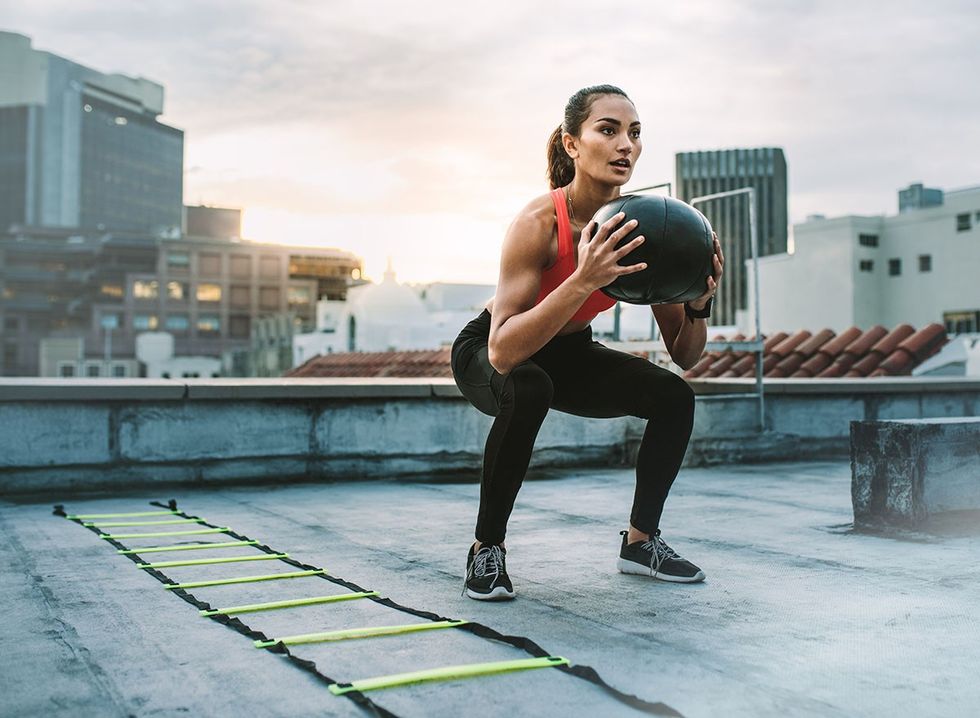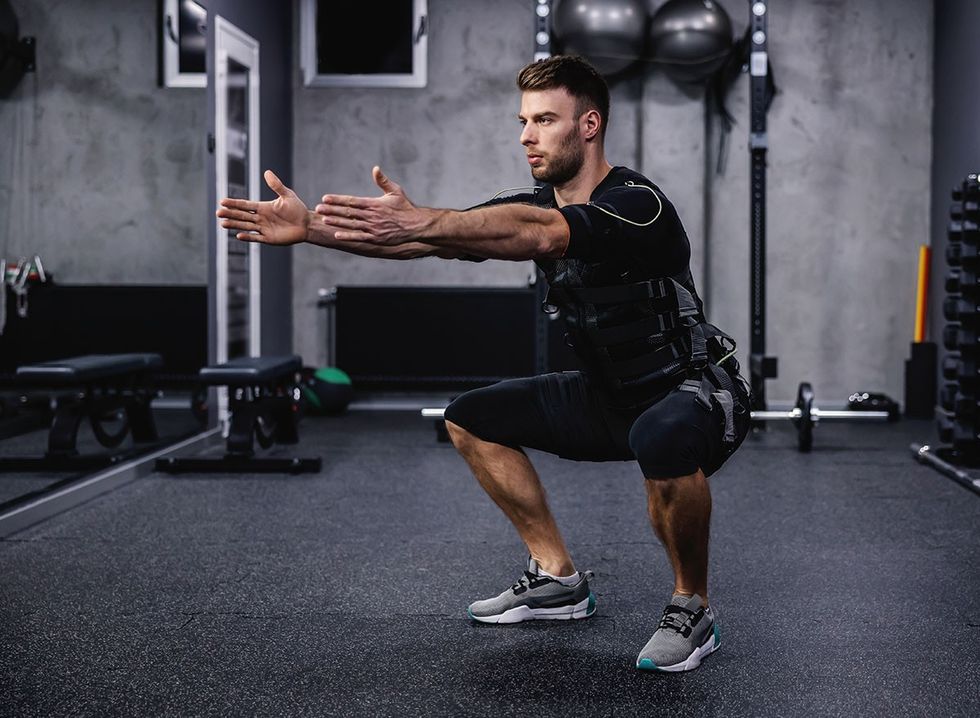We spend hours hunched over desks and slouched on couches, rarely challenging our bodies to move the way they naturally should. Digital coach Laura Try, with over 170,000 YouTube subscribers, invites us to reclaim a fundamental human position that many of us have lost: the deep squat. "Modern-day living and this chair-filled life is causing some of us to move less and with less range of motion," Laura explains. Try this simple test to discover where your mobility stands—you might be surprised at what you learn about your body.
What Is the Deep Squat Test?
The deep squat test challenges you to hold a deep squat position for as long as possible, ideally reaching the full 10 minutes. "The deep squat, otherwise known as the Asian or primal squat, is meant to be a resting position," Laura says. The challenge requires no equipment and can be done anywhere. It's not just about holding the position but assessing how your body responds to this natural human posture.
RELATED: 5-Minute Walking Workouts for Women Over 40 to Burn Fat at Home
The Lost Resting Position
What we now consider an exercise was once a normal resting position. Babies naturally squat with ease, and people of all ages in many cultures around the world use this position daily. It's not about age or special abilities—it's about regular practice. Laura points out, "They do it all the time and perhaps we should too." Being able to get into a deep squat is an indicator of total body mobility.
Why We Struggle With Squatting
Modern living has dramatically reduced our need to get low to the ground. "Once upon a time we'd have crouched down to light a fire, prepare our meals or investigate an edible plant growing on the ground. Now we have most things that we need at a convenient height," Laura notes. Our chair-dependent lifestyle has created what fitness expert Kelly Starrett calls "an imbalance between the environment and organism"—the way we live doesn't match what our bodies are designed to do.
Benefits Beyond Flexibility
The deep squat offers more than just improved mobility. "This concertina effect, even though our body is folded over, it kind of untangles the body by unlocking the ankles, hips and back," Laura explains. Regular practice can help with total body alignment, potentially reducing lower back pain and other issues. The position creates a full-body stretching and strengthening effect that counters the tightness from sedentary living.
RELATED: Tone Sagging Arms in 2 Weeks With These 5 Exercises
Making the Squat Accessible
Not everyone can immediately drop into a perfect deep squat—and that's perfectly okay. "Practicing this doesn't require you to be miserable; it can be enjoyable," Laura reassures. She suggests several modifications: placing something under your heels, using the wall for support, or even sitting on a low block. The goal isn't perfection but spending time in a version of the position that works for your body.
Laura's Personal Journey
Even fitness professionals struggle with this fundamental movement. "Believe me when I say six or seven years ago I could not get into a deep squat let alone stay here," Laura admits. Her ankles were tight, her shins would burn, and her hips and lower back would scream in protest. The position felt completely unnatural to her at first, defying the idea that it could ever be restful. Yet with consistent practice, her body adapted.
The "Use It or Lose It" Principle
Our bodies adapt to the demands we place on them—or don't place on them. "If we don't use our bodies and joints to their full range of motion what happens? They tighten up, use it or lose it," Laura emphasizes. By regularly practicing the deep squat, we signal to our body that this range of motion is important, helping to maintain or restore natural mobility that many people lose over time.
RELATED: I Got My Best Body After 50 and Here’s How You Can, Too
Beyond Static Holding
The deep squat isn't just about getting down and staying down. "The thing about doing this is it isn't just about getting down here and staying down here but having the ability to get up from this position too which requires leg strength," Laura explains. This functional movement builds both mobility and strength, supporting everyday movements and potentially reducing injury risk as we age.
Making It Part of Daily Life
You don't need to set aside special time for deep squat practice. "Do a bit of weeding in your garden in this position, do some playtime with your children or grandchildren in this position, watch some TV in this position," Laura suggests. Even short periods throughout the day add up. The key is consistency, not duration—even 10 seconds at a time can help restore this natural movement pattern.
RELATED: 20 Superfoods for People Over 50
The Routine That Worked for Laura
Consistent practice yields results, even if progress seems impossible at first. "The routine that really helped me get better at my deep squat over the years is the Ido Portal squat routine," Laura shares. She incorporated a shortened version into her warm-up routine for years, not realizing how much she had improved until suddenly the position felt comfortable. The transformation happened gradually through consistent practice over nine years.
A Test of Mental Resilience
The squat test challenges your mind as much as your body. "I can't say it's particularly comfortable; my hips feel really tight, my lower back is stretched, and my shins are burning a little bit," Laura admits at the nine-minute mark of her demonstration. Yet she persists, showing that mental fortitude is part of the process. The test builds not just physical capacity but also the ability to sit with discomfort.
Start Where You Are
Everyone's squat journey begins at a different place. Laura encourages readers to try the test regardless of their current ability level. "If you're trying this then I'd love to know how you're doing and how it feels," she says, inviting community participation. Whether you can hold the position for 10 seconds or 10 minutes, the key is starting the process of reclaiming this fundamental movement pattern. And if you enjoyed this article, don't miss 12-3-30 Walking Method: 20 Proven Tips to Lose Weight Faster.

















 Shutterstock
Shutterstock Shutterstock
Shutterstock Shutterstock
Shutterstock Shutterstock
Shutterstock Shutterstock
Shutterstock Shutterstock
Shutterstock Shutterstock
Shutterstock Shutterstock
Shutterstock Shutterstock
Shutterstock Shutterstock
Shutterstock
 Shutterstock
Shutterstock Shutterstock
Shutterstock Shutterstock
Shutterstock Shutterstock
Shutterstock
 Shutterstock
Shutterstock Shutterstock
Shutterstock Shutterstock
Shutterstock Shutterstock
Shutterstock Shutterstock
Shutterstock Shutterstock
Shutterstock Shutterstock
Shutterstock Shutterstock
Shutterstock Shutterstock
Shutterstock Shutterstock
Shutterstock Shutterstock
Shutterstock Shutterstock
Shutterstock Shutterstock
Shutterstock

 I'm a Nutritionist and These 9 High-Protein Snacks Keep My Clients Full While Losing 50 Pounds
I'm a Nutritionist and These 9 High-Protein Snacks Keep My Clients Full While Losing 50 Pounds
 Shutterstock
Shutterstock 2. Processed FoodsShutterstock
2. Processed FoodsShutterstock Shutterstock
Shutterstock Shutterstock/Prostock-studio
Shutterstock/Prostock-studio Shutterstock
Shutterstock Pro TipsShutterstock
Pro TipsShutterstock Shutterstock
Shutterstock Shutterstock
Shutterstock Shutterstock
Shutterstock Shutterstock
Shutterstock Don’t Drink as Much AlcoholShutterstock
Don’t Drink as Much AlcoholShutterstock Most Women on GLP-1s Are Making a Few Common MistakesShutterstock
Most Women on GLP-1s Are Making a Few Common MistakesShutterstock Soda and Sugary DrinksShutterstock
Soda and Sugary DrinksShutterstock Shutterstock
Shutterstock Eat BreakfastShutterstock
Eat BreakfastShutterstock And Improve Insulin SensitivityShutterstock
And Improve Insulin SensitivityShutterstock Belly Flab Strip Tip: Sugar and Fat Calories Leave Its Mark on Your BodyShutterstock
Belly Flab Strip Tip: Sugar and Fat Calories Leave Its Mark on Your BodyShutterstock Shutterstock
Shutterstock The Drugs Mimic the GLP-1 Hormone Naturally Produced by the BodyShutterstock
The Drugs Mimic the GLP-1 Hormone Naturally Produced by the BodyShutterstock 3. Deep-Fried ItemsShutterstock
3. Deep-Fried ItemsShutterstock